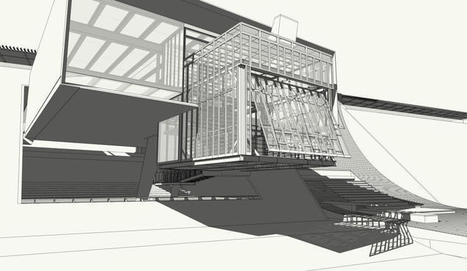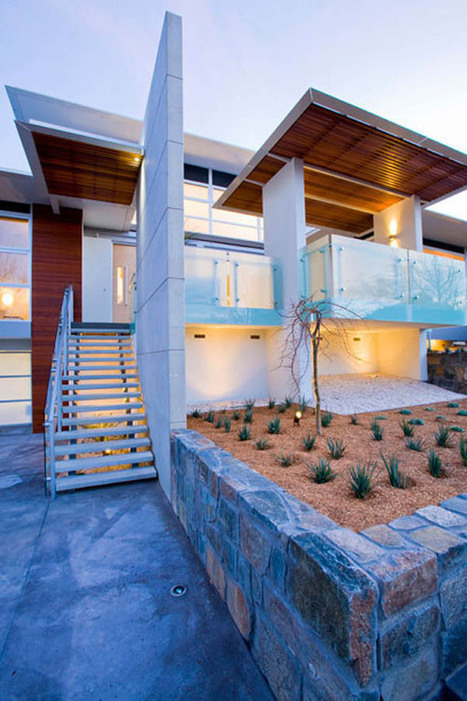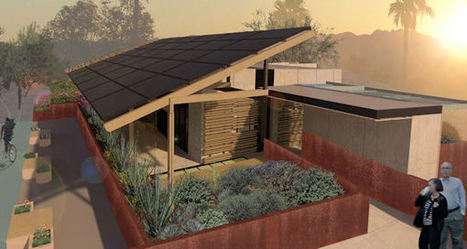On a hot day, instead of cranking up the air conditioning, this house transforms: A screen and shell move out to wrap around the entire home, shading everything so it cools down.
"It provides this flexible control over heat gain from sunlight," says architect Todd Fix, who compares the screen and shell to extra layers of clothes you can put on or take off. "So if it's a cold day, the sensor will sense that, and it will close both to keep the heat inside. If you want more light in the space, you can open up the screen or open up the shell."
It's a way to create a passive, zero-energy home without the typical passive house design. "The living area is all glass, from the walls and ceiling to the floors," Fix says. "This opens up a house. Instead of having really thick, insulated walls that are opaque, so you can't see out or see in, it kind of opens you up to the environment."
Via Lauren Moss



 Your new post is loading...
Your new post is loading...













A house that transforms with the weather. On a hot day, instead of cranking up the air conditioning, this house transforms: A screen and shell move out to wrap around the entire home, shading everything so it cools down.